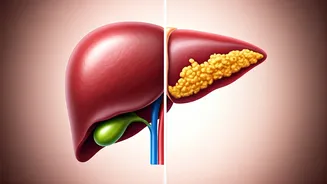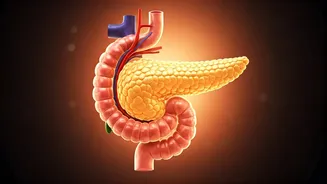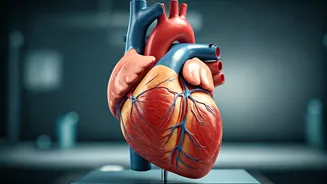Defining the Terms
Pre-diabetes is a condition where your blood sugar levels are higher than normal but not high enough to be classified as type 2 diabetes. It is a critical
warning sign indicating a heightened risk of developing diabetes. Fatty liver disease, on the other hand, is the buildup of extra fat in the liver. A small amount of fat in the liver is normal, but too much can lead to health problems. The terms pre-diabetes and fatty liver are critical in understanding one's health risks and the importance of preventive care. Both are often linked, as those with pre-diabetes are more likely to develop non-alcoholic fatty liver disease (NAFLD).
Body's Reaction to It
When you are pre-diabetic, your body struggles to use insulin effectively, a hormone that helps regulate blood sugar. Consequently, the glucose (sugar) stays in your bloodstream, causing levels to rise. This chronic high blood sugar can damage various organs over time. In fatty liver disease, the excess fat in the liver causes inflammation and damage to the liver cells. This can lead to scarring (cirrhosis) and liver failure in severe cases. These two conditions are often intertwined, and the presence of one significantly increases the risk of the other. The liver's inefficiency can worsen insulin resistance, which exacerbates pre-diabetes.
Risk Factors Involved
Several factors can increase your risk of pre-diabetes and fatty liver. These include being overweight or obese, especially with excess fat around the abdomen. A family history of diabetes or fatty liver disease also elevates your risk. Inactivity, poor diet (high in processed foods, sugar, and saturated fats), and certain medical conditions such as high cholesterol and high blood pressure, contribute significantly to these conditions. Age also plays a role, with the risk increasing as you get older. Other factors include ethnicity; for example, people of South Asian descent have a higher risk of developing type 2 diabetes.
Symptoms to Watch
Early-stage pre-diabetes and fatty liver disease often have no noticeable symptoms, making them hard to detect. As these conditions progress, symptoms may emerge. Pre-diabetes might show itself through increased thirst, frequent urination, fatigue, and blurry vision. Fatty liver disease can cause fatigue, abdominal pain or discomfort, and, in severe cases, jaundice (yellowing of the skin and eyes). These symptoms can be subtle and easily overlooked. That is why regular check-ups and screenings are crucial. Furthermore, individuals may experience symptoms that overlap both conditions, increasing the difficulty of an early diagnosis.
Complications and Dangers
If left untreated, pre-diabetes can progress to type 2 diabetes, significantly increasing the risk of heart disease, stroke, kidney disease, nerve damage (neuropathy), and eye problems (retinopathy). Fatty liver disease can lead to cirrhosis, liver failure, and an increased risk of liver cancer. The combination of pre-diabetes and fatty liver further elevates the risks. These conditions exacerbate each other, creating a vicious cycle. Addressing these issues early can prevent severe consequences. The cumulative impact of these conditions necessitates proactive and immediate care to mitigate potential health crises.
Taking Action Now
Preventing and managing pre-diabetes and fatty liver involves lifestyle changes. A healthy diet, low in processed foods, sugars, and saturated fats, is vital. Regular physical activity helps improve insulin sensitivity and reduces liver fat. Maintaining a healthy weight is equally important. In addition, getting regular medical check-ups to monitor blood sugar levels and liver function can aid in early detection and intervention. Consulting a healthcare professional for a personalized management plan is crucial. Seeking guidance from dieticians and fitness experts can further improve one's health and wellness.











